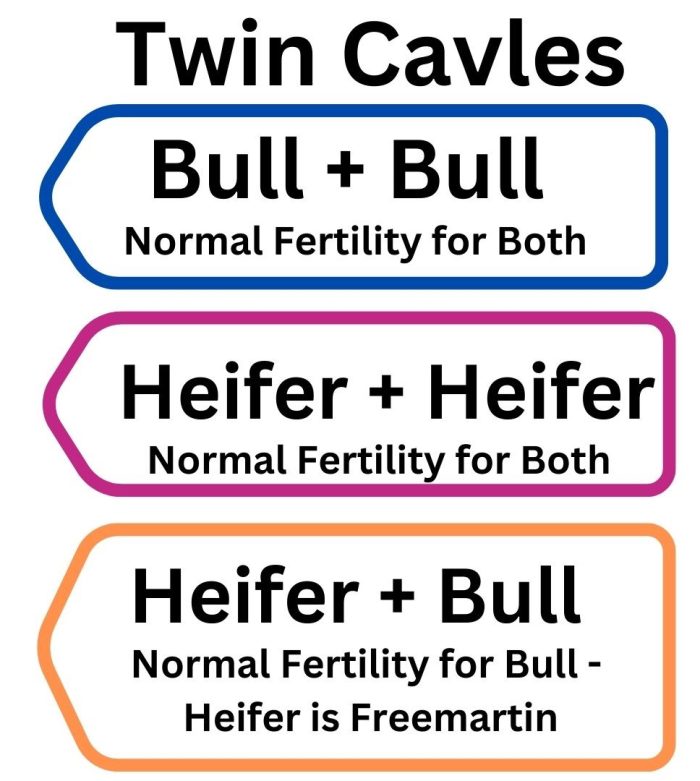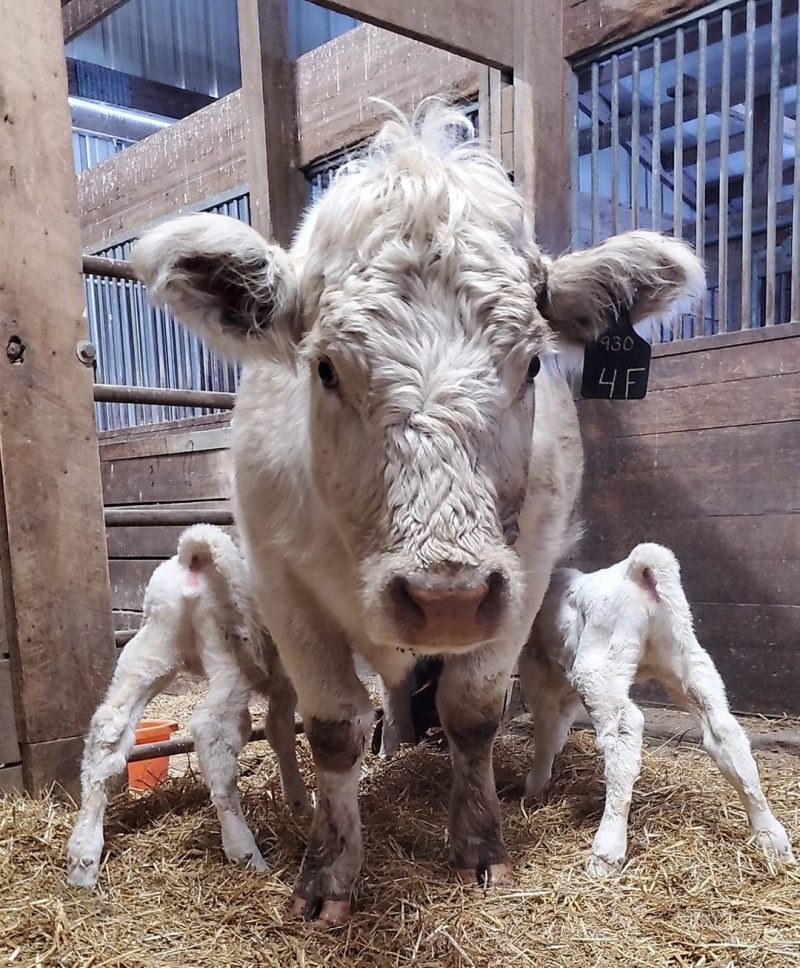TWINS – they bring a mixed bag of emotions to cattleman’s mind! Yes, great we got two calves from one cow, but also thoughts of mixing bottles, a thin “milked-down” momma cow, and so much more spin through your mind. Not to add to the roller-coaster, but don’t forget about Freemartins!
A Freemartin is a heifer who is born a twin to a bull calf. This is something most of us have been familiar with since we were young, and while we knew those heifers needed to be culled because they were going to be infertile, it’s sometimes interesting to know exactly why that is and what is happening to cause the Freemartin phenomenon.
A Freemartin is a female heifer that is born a twin with a bull and is born with reproductive tract deformities and in most all cases is infertile. The development of the infertility is a result of the fusion of the chorioallantois portion of the placenta, which occurs around day 28 to 30 of gestation. This results in a common blood supply between the two fetuses through placental circulation.
The Freemartin process occurs during sexual differentiation. On the fetal development timeline testicular development (day 45 of gestation) occurs prior to ovarian development (day 50-60 of gestation), this is where the issues start for the female calf.
In every embryo there are two sets of ducts, the Müllerian ducts and the Wolffian ducts. Ultimately the Müllerian ducts form into the female’s reproductive tract and the Wolffian ducts form into the male reproductive tract.
Depending on the sex of the fetus (remember sex is determined by the sperm at fertilization, through the presence of either a X or Y chromosome), hormones are produced to cause the regression of the unneeded set of ducts during sexual differentiation.
 Once the male twins testicular develop begins, they produce antimüllerian hormone (AMH), which aids in sexual differentiation by inducing the regression of the Müllerian ducts (female) and allow for the Wolffian ducts (male) to farther develop. The regression of these ducts aid in the male developing into a function/fertile male.
Once the male twins testicular develop begins, they produce antimüllerian hormone (AMH), which aids in sexual differentiation by inducing the regression of the Müllerian ducts (female) and allow for the Wolffian ducts (male) to farther develop. The regression of these ducts aid in the male developing into a function/fertile male.
While both males and females produce AMH, in males it is produced much earlier in fetal development and at much higher levels. For the female fetuses sharing a blood supply with their twin brother, the early exposure to these elevated levels of AMH cause the full or partial regression of the female fetus’s Müllerian ducts and does not allow for these ducts to develop into her reproductive tract. This results in her being infertile – A Freemartin.
While twinning only occurs in about 0.5% to 1% of beef cattle pregnancies, if a bull and a heifer are a result of that pregnancy there is a 92% to 95% chance that the heifer will be infertile. About 6% of twin pregnancies result in the birth of only one calf. In these cases, a Freemartin can still be born, depending on when the twin bull was aborted. In addition, in some very rare cases, typically when late fusion of the placenta occurs, fertile heifers can be born a twin to a bull, but this is very rare.
While there is a very small chance that your heifer, born twin to a bull will be fertile and productive as a cow, it is best to identify those heifers and have a plan. For management sake keeping good records will allow for Freemartins to be identified at birth, but having your heifers palpated or ultrasounded will allow for producers to be certain all their replacement heifers are not Freemartins. In addition, to physical exams there are blood tests available.
- Big Doe Contest Returns for 2025: A Growing Thanksgiving Tradition - November 14, 2025
- UF/IFAS Extension Panhandle Cattlemen’s College Announces Scholarship Opportunity for Florida Youth – Application Deadline September 15 - August 29, 2025
- Foot Rot Prevention and Treatment for Cattle - August 15, 2025

